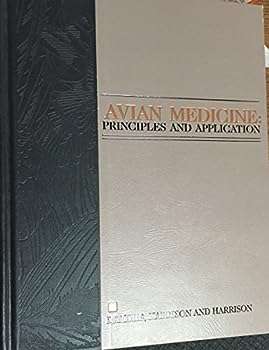Avian Medicine: Principles and Applications
(Rictchie, Harrison and Harrison)

Avian Medicine: Principles and Applications
Avian Medicine: Principles and Applications
Ritchie, Harrison and Harrison
This highly regarded was developed to provide a definitive reference text that blends the science of health with the art of clinical medicine.
By applying the information presented in the book, the competent avian practitioner will be able to effectively provide the highest quality care for his patients and guide the companion bird client or aviculturist in implementing and effective preventative health programme. Less experienced practitioners can learn basic evaluation, support and surgical techniques while developing an expanded understanding of advanced procedures that can be performed by specialists in avian medicine and surgery.
Avian Medicine: Principles and Application is the essential reference and the most comprehensive why to, when to and how to guide for companion and aviary bird management, medicine and surgery.
All these publications are for educational purposes ONLY – this information is not intended to help owners self-diagnose or treat their own or others birds
Avian Medicine: Principles and Applications (Table of Contents)
Chapter 1: The Avian Patient
Chapter 2: The Avian Flock
Chapter 3: Nutrition
Chapter 4: Perspective on Parrot Behavior
Chapter 5: Defense Mechanism of the Avian Host
Chapter 6: Future Preventive Medicine
Chapter 7: Practice Dynamics
Chapter 8: Making Distinctions in the Physical Examination
Chapter 9: Hematology
Chapter 10: Cytology
Chapter 11: Biochemistries
Chapter 12: Imaging Techniques
Chapter 13: Endoscopic Examinations and Biopsy Techniques
Chapter 14: Necropsy Examination
Chapter 15: Supportive Care and Emergency Therapy
Chapter 16: Trauma Medicine
Chapter 17: Antimicrobial Therapy
Chapter 18: Formulary
Chapter 19: Gastroenterology
Chapter 20: Hepatology
Chapter 21: Nephrology
Chapter 22: Pneumonology
Chapter 23: Endocrinology
Chapter 24: Dermatology
Chapter 25: Oncology
Chapter 26: Ophthamology
Chapter 27: Cardiology
Chapter 28: Neurology
Chapter 29: Theriogenology
Chapter 30: Neonatology
Chapter 31: Malnutrition
Chapter 32: Viruses
Chapter 33: Bacteria
Chapter 34: Chlamydia
Chapter 35: Mycoses
Chapter 36: Parasites
Chapter 37: Toxins
Chapter 38: Mycoplasma and Rickettesia
Chapter 39: Anesthesiology
Chapter 40: Surgical Considerations
Chapter 41: Soft Tissue Surgery
Chapter 42: Orthopedic Surgical Techniques
Chapter 43: Passeriformes
Chapter 44: Columbiformes
Chapter 45: Galiformes
Chapter 46: Anseriformes
Chapter 47: Ramphastidae
Chapter 48: Ratites
Index
